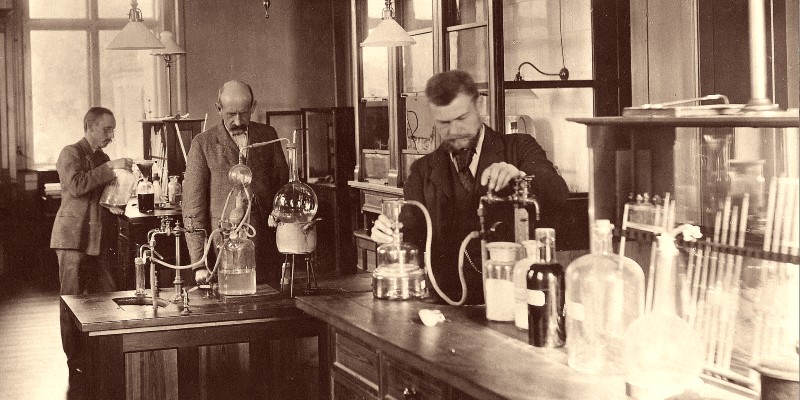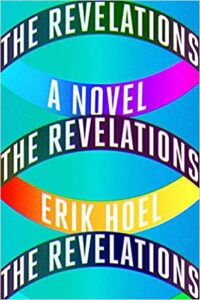A dead body at the start of a book is interesting not because of its titillation — so inured are we to this image it barely affects us anymore — but because of the promise of a cognitive puzzle that can be solved. When one thinks about it, it’s astounding that the murder mystery genre is as rich as it is. After all, it doesn’t have the variety of alien landscapes like sci fi or fantasy, nor the diverse frights of the horror genre; its plot is highly constrained in that there must be a death, there must be an investigation, and, almost universally, there must be a final reveal. Yet this structure works. Something in our brain responds to it; just like how we are genetically programmed to consider sweet sugar succor, solving mysteries satisfies deep human drives.
This is because humans want to minimize the error between their expectations and what they perceive—in neuroscience this is called “predictive processing.” Effectively, brains have certain “priors” or expectations about how the world should work, and your brain is constantly trying to minimize any discrepancy between its expectations and what’s actually going on. It’s why one of the more stressful things in the world is a fly buzzing about randomly, or the arbitrary sound of construction work in the background, and one of the most comforting things in the world is when everything goes according to plan.
There are two ways to minimize the stressful error signals. The first is to change your model of the world to match better what’s actually going. The second is to go out in the world and squash the offending error, reordering the world to meet your expectations. Most of human endeavor seems to involve the latter.
The solution of a mystery is the bringing of order to the world of chaos. This means there are cloying similarities between detective stories and science. An unexplained phenomenon is investigated via a protagonist, often someone who places faith in the powers of observation when others wouldn’t, and on examination of empirical evidence in the form of clues, various hypotheses are proposed, which often lead to more clues, until a final reveal occurs. Both science and murder mysteries place a premium on empirical evidence, which unlike reports or hearsay, acts as a gold standard of proof.
This connection is not surprising. The first time the classic detective scene in the western world appeared, it was written by one of the early proponents of science as a distinct discipline of thought: Voltaire. In Voltaire’s novel Zadig, the eponymous main character deduces a description of a King’s lost horse he has never seen, just from the evidence it leaves behind. This is also the beginning of Umberto Eco’s The Name of the Rose, in which William of Baskerville deduces facts about an abbot’s lost horse, a homage to the start of detective novels at the start of a detective novel. Zadig was likely also an influence of Edgar Allan Poe’s story “The Murders in the Rue Morgue,” which is widely considered the standard-setting beginning of the murder mystery genre. So in the end it’s Voltaire to blame for all this — a single quilled scene wherein Zadig lists off a litany of deduced facts becomes the template for an entire genre of literature. Likely it was tossed off in an afternoon, sometime around Voltaire’s 30th cup of coffee for the day.
So the origins of the murder mystery and science are the same. Part of an Enlightenment tradition that promoted reason, they are convinced of the knowability the world, their implicit preternatural confidence offering a stark contrast to the implicit unknowability of medieval religion. The “superpowers” that investigators like Sherlock Holmes demonstrate is really an expression of The Enlightenment’s confident view on humankind’s own superpower of rationality — the person Sherlock stands in most contradiction to is, in a sense, a priest.
My own mystery was partly inspired by a scientist, or more precisely, a stray sentence in Nobel-laureate Francis Crick’s The Astonishing Hypothesis. After winning the Nobel for discovering DNA, Francis Crick set his sights on one of the greatest remaining scientific mysteries: how the brain enables conscious experience. He writes: “Let us now return to our main problem. This is to locate the ‘awareness’ neurons and to discover what it is that makes their firing symbolize what we see. This is like trying to solve a murder mystery. We know something about the victim (the nature of awareness) and we know various miscellaneous facts that may be related to the crime.” In my novel, The Revelations, which takes place in the world of neuroscience, a mysterious death becomes entwined with the search for a scientific theory of consciousness.
This structure struck me as natural. Facts about the nature of awareness do appear like leads to scientists: that cutting a brain down its middle communicative corpus callosum appears to lead to two separate consciousnesses sharing a skull, one in each hemisphere. Here’s a clue: deep anesthesia can cause a shutdown of neural firing resulting in a loss of consciousness. So clearly neural firing is important. But another clue is that a loss of consciousness can result from the widespread neural activity of slow waves that traverse the cortex in large swells during deep dreamless sleep, in which neurons fire just as much as during the awake state. That during an epileptic fit neurons actually fire more than when a person is awake, yet this again can lead to loss of consciousness. That a lesion to the cortex might not impair consciousness at all, despite it being the most sophisticated and recently-evolved part of the human brain, but a lesion to the brainstem can lead to a permanent score of zero on the Glasgow coma scale.
The various stances to the problem of consciousness are like the various hypotheses entertained by the investigator. Consider Donna Tartt’s The Secret History, wherein the murder and its perpetrator are not concealed at all — obvious from the get-go, the mystery is the why behind the act. In the 1990s, Francis Crick advocated for uncovering the “neural correlates of consciousness.” That is, to put aside what he considered to be the metaphysical gobbledegook and just focus on correlating changes in consciousness to changes in neural activity. This top-down approach has become the dominant mode of investigation into consciousness for scientists, who use techniques like neuroimaging to examine changes in brain states when subjects report changes in experience. But this leaves us in the same position of a book like The Secret History: we know that some particular neural dynamic is synonymous with consciousness, but we don’t yet know why — it is simply the beginning of the mystery.
Agatha Christie’s Murder on the Orient Express has Hercule Poirot chasing down a murderer amid stranded train passengers. Slowly the innocent bystanders begin to accumulate suspicious motives, and by the end, it becomes obvious that it is not a question of who committed the murder, but who did not? Maybe everyone did it. Maybe there are no innocent bystanders. Alike in kind: maybe everything is conscious, maybe even motes of dust and individual atoms are conscious, just not of much. In this position, which is called panpsychism, while consciousness may be spread out over the physics of the universe, it is only in the brain that it concentrates enough for it to assume the rich structure and properties of own our phenomenology. That is to say, panpsychism solves the scientific mystery of consciousness in ways its proponents consider elegant and its detractors consider brute. Just like all plot twists really.
Graham Greene’s The Third Man starts as a murder mystery, a writer investigating the death of an old friend. But then Orson Wells appears in that shadowy doorway, and when you see his face, alive and well, you realize that this isn’t a murder mystery at all, but something far more sinister. This is the position of eliminativism: maybe we are desperately wrong about our intuitions and how we report. Perhaps our own consciousness does not truly exist. Maybe we are the victims of an illusion, and consciousness can be eliminated from the natural order of the world. If so, all that needs to be explained is not the mysterious nature of consciousness, but rather why we find consciousness so mysterious. The latter is still difficult but at least solvable, eliminativism’s proponents argue, and those searching for a scientific theory of consciousness are simply confused, since there’s no consciousness to begin with. In this black and white view, consciousness is a problem to be dissolved, not solved.
The inherent Enlightenment confidence and background of the detective story is something I wanted to interrogate in my own mystery novel, The Revelations, in which a group of scientists themselves form an amateur investigation into the death of one of their own. The detectives are scientists, and the scientists are detectives; for really, this has always been the case historically.
The problem the characters face is that neither science nor actual detective work is as easy as Zadig makes it seem: there is never truly a path of mud laid out just right to catch hoof prints, or brambles waiting at eye-level to catch a stray horse hair. Really, a stakeout might lead to nothing, a study might support the null hypothesis or end up with contradictory data; even when empirical data are obtainable they are almost always noisy and less interpretable than what is classically presented to a detective. The characters in The Revelations face not one, but two ultimate mysteries: the death of a colleague, yes, but also, the problem of consciousness. As the detective and scientist merge into a single figure, so does their object of investigation, which becomes stranger and stranger. And if the confident veil of the Enlightenment slips, even for an instant, one has to wonder: what gorgon lies waiting behind the mask?
***


















